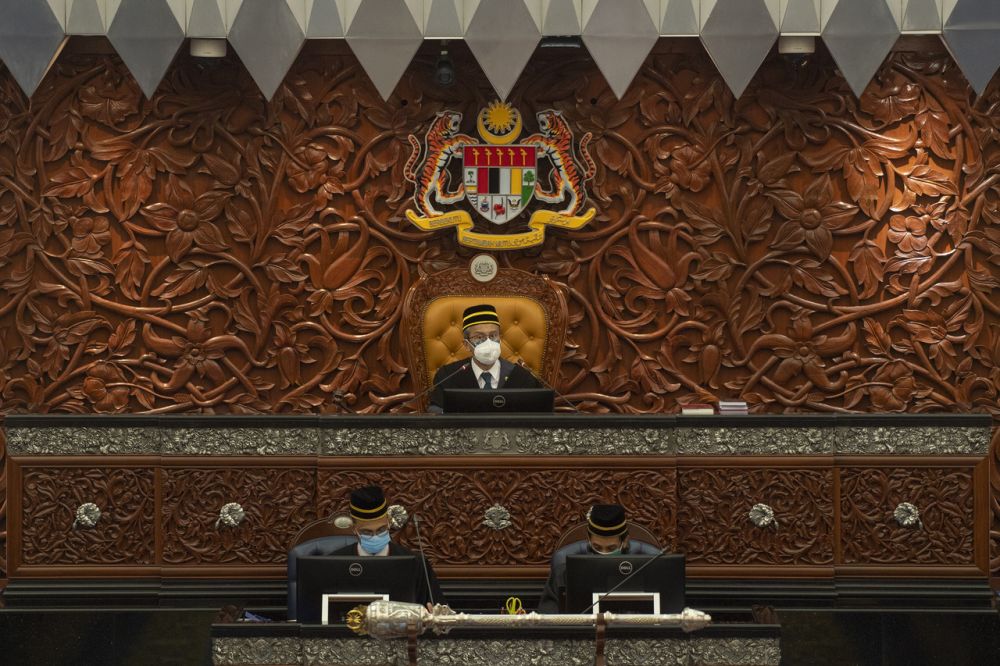JULY 27 — The Dewan Rakyat was stunned yesterday. 90 minutes into the proceeding, the Minister in the Prime Minister’s Department (Law and Parliament) Takiyuddin Hassan stood up to say that he had three matters in response to the Opposition Leader Anwar Ibrahim. On the third matter, he was heard saying as follows:
“Yang ketiga, yang terakhir, yang ketiga, please listen to me. Kerajaan telah buat keputusan berdasarkan kepada Perkara 150(3) untuk membatalkan semua Ordinan Darurat yang telah dibuat semasa Proklamasi Darurat ini. Oleh kerana telah ‘direvoked’ [sic] maka isu ungkai ataupun ‘annulment’ sudah tidak lagi relevan.”
‘Point of order’ was then heard being raised by Bagan MP Lim Guan Eng as well as by Puchong MP Gobind Singh Deo. Speaker Azhar Azizan Harun ignored the point of order and called upon Prime Minister Muhyiddin Yassin to make his ministerial statement on the national recovery plan (NRP) as per the Order Paper.

What is a point of order?
A point of order is an appeal to the Speaker for clarification or for a ruling on a matter of procedure in the House. An MP who wants clarification or who believes that a breach of the rules of the House has occurred, stands up and says “Point of Order, Mr Speaker.” The point of order should then be stated and the Speaker gives a ruling on the interruption.
A point of order can be raised at virtually any time in the proceedings, provided the point of order is raised and concisely argued as soon as the irregularity occurs. As a point of order concerns the interpretation of the rules of procedure, it is the responsibility of the Speaker to determine its merits and to resolve the issue. [see Rules of Order and Decorum, Canada House of Commons]
Points of order were raised to seek clarification from the minister that the Emergency Ordinances (EO) had been revoked. EOs are promulgated by the Yang di-Pertuan Agong pursuant Article 150(2B) of the Federal Constitution. Under clause (2C) of the same Article, EOs have the same force and effect as an Act of Parliament, and shall continue in full force and effect as if it is an Act of Parliament until it is revoked or annulled under Clause (3) or until it lapses under Clause (7).
The issue in the House yesterday was whether the EOs have been legally and duly revoked. The power to revoke, like the power to issue a Proclamation of Emergency and to promulgate EO, vests in the Yang di-Pertuan Agong. This much is clear from the judgment of Lord Diplock in the Privy Council in the case of Teh Cheng Poh v PP [1979].
To revoke is to repeal [section 3 of the Interpretation Acts 1948 and 1967 (Act 388)].
Like an Act of Parliament is repealed by another Act, an EO must also be repealed by another EO — in the name of the Agong and published in the Gazette.
Under our constitutional scheme of things, the Cabinet advises the Agong while the latter acts on advice of the former. In this regard, the Cabinet advises the Agong to promulgate an EO pursuant to which the Agong so promulgate. Similarly, it is the Cabinet to advise the Agong to revoke an EO pursuant to which the Agong so revoke the EO by another EO published in the Gazette.
Both MPs for Bagan and Puchong were entitled to seek clarification from the Minister.
Points of order were valid, Mr Speaker. The Dewan Rakyat awaits your ruling.
* This is the personal opinion of the writer or publication and does not necessarily represent the views of Malay Mail.





















